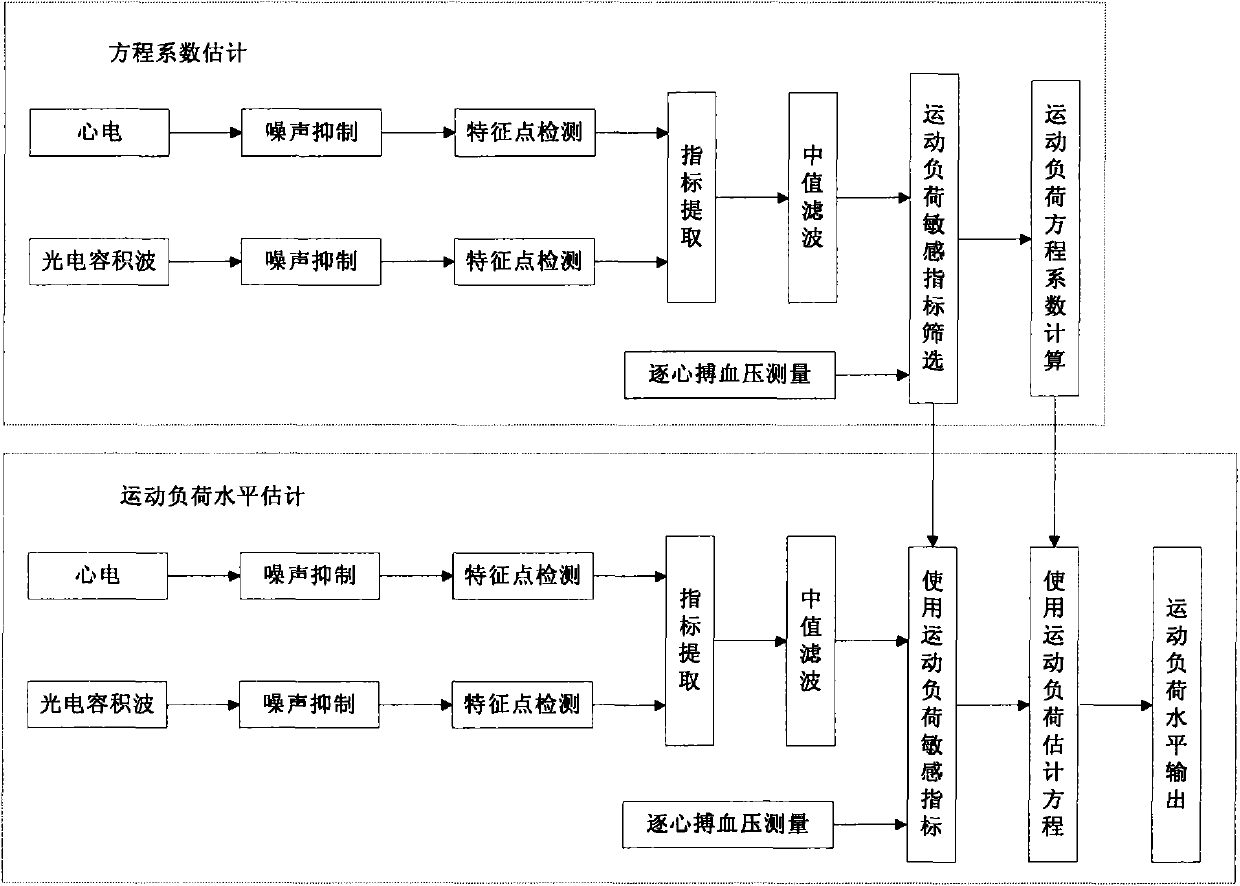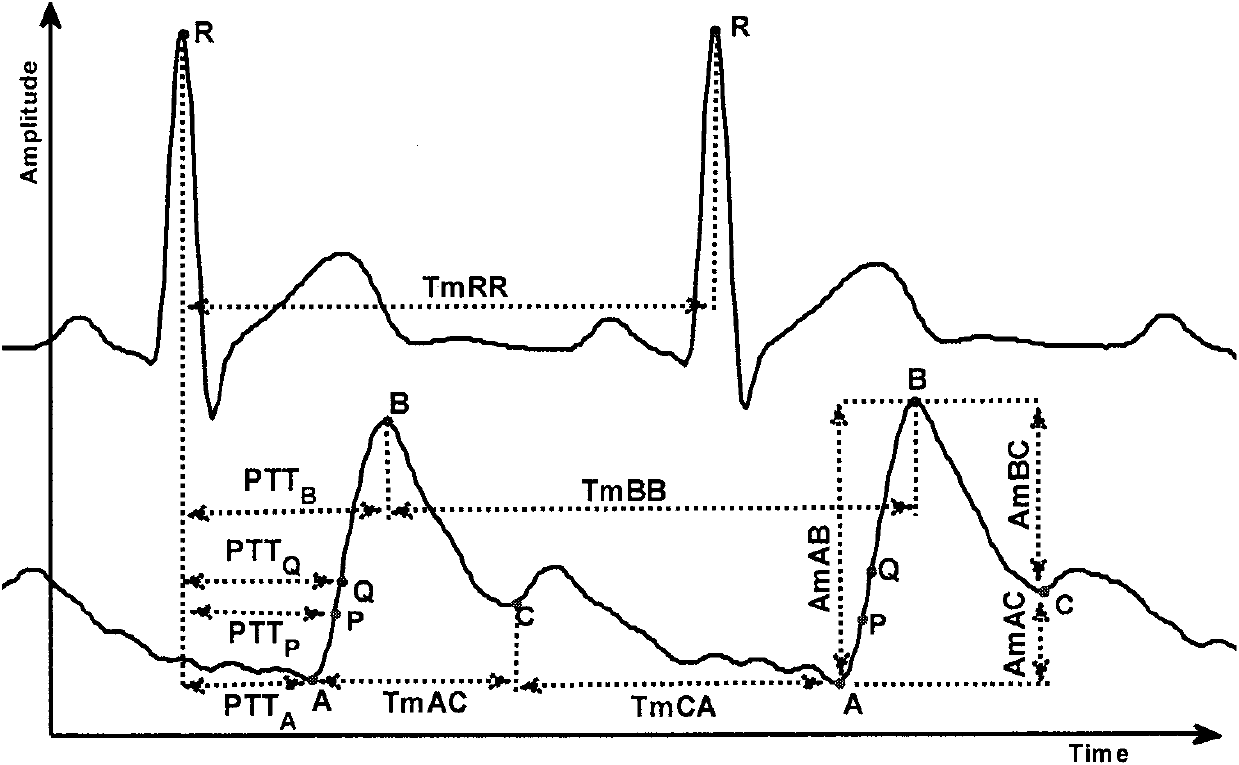A Method for Estimating Exercise Load Level Based on Cardiogenic Signals
A technology for exercise load and estimation equations, applied in medical science, sensors, diagnostic recording/measurement, etc., can solve the problems of inability to fully reflect the response of the cardiovascular system, singleness, one-sidedness, etc.
- Summary
- Abstract
- Description
- Claims
- Application Information
AI Technical Summary
Problems solved by technology
Method used
Image
Examples
Embodiment Construction
[0039] This embodiment provides a method for estimating the exercise load level based on cardiogenic signals, including the following steps:
[0040] Step S1, in the "rest-exercise" experiment, screen out individualized exercise load sensitive indicators from ECG, beat-by-beat blood pressure, and photoplethysmography, and establish individualized exercise load-sensitive indicator vectors, specifically including the following steps:
[0041]Step S1.1, "rest-exercise" experiment and physiological data collection. The data collection time is 6 minutes, including a 3-minute rest period and a 3-minute exercise period. The specific experimental process is: sit quietly on the bicycle for 3 minutes, pedal the bicycle for 3 minutes, and the power is set to 100W. ECG, photoplethysmography, and beat-by-beat blood pressure were collected synchronously throughout the experiment. The acquisition equipment of ECG and photoplethysmogram is the non-invasive heart function instrument NCFM deve...
PUM
 Login to View More
Login to View More Abstract
Description
Claims
Application Information
 Login to View More
Login to View More - R&D Engineer
- R&D Manager
- IP Professional
- Industry Leading Data Capabilities
- Powerful AI technology
- Patent DNA Extraction
Browse by: Latest US Patents, China's latest patents, Technical Efficacy Thesaurus, Application Domain, Technology Topic, Popular Technical Reports.
© 2024 PatSnap. All rights reserved.Legal|Privacy policy|Modern Slavery Act Transparency Statement|Sitemap|About US| Contact US: help@patsnap.com










